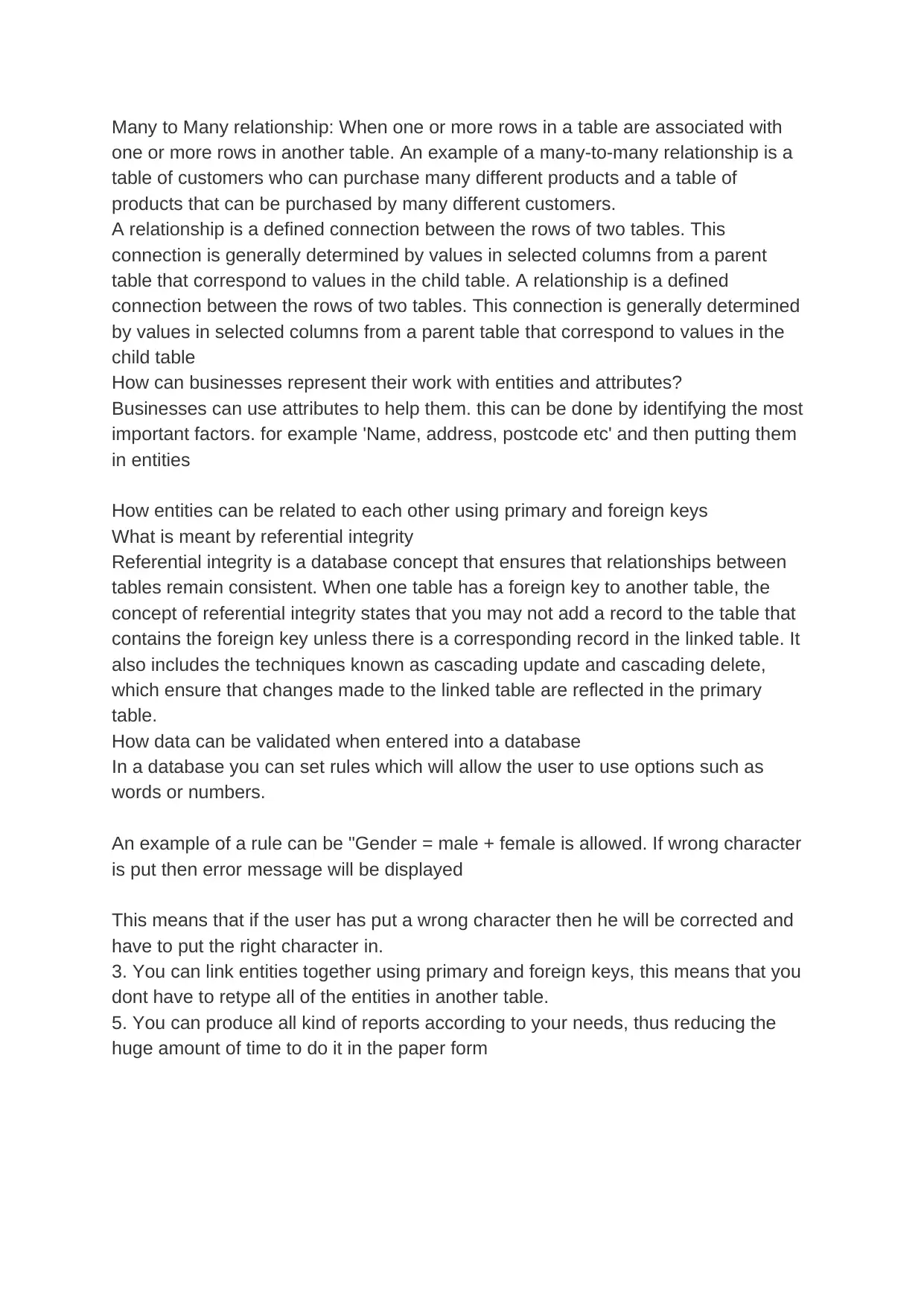Database Relationships and Integrity
VerifiedAdded on 2019/09/16
|2
|813
|269
Report
AI Summary
The assignment content discusses relationships between database entities, primary and foreign keys, and referential integrity. It explains that entities can be related through primary and foreign keys, allowing for efficient data retrieval and manipulation. Primary keys are unique identifiers for each record, while foreign keys link records across tables. The content also touches on the concepts of one-to-many and many-to-many relationships, as well as how businesses can represent their work using entities and attributes. Additionally, it covers how to validate data when entered into a database, with rules enforcing correct input.
Contribute Materials
Your contribution can guide someone’s learning journey. Share your
documents today.
1 out of 2
![[object Object]](/_next/static/media/star-bottom.7253800d.svg)







